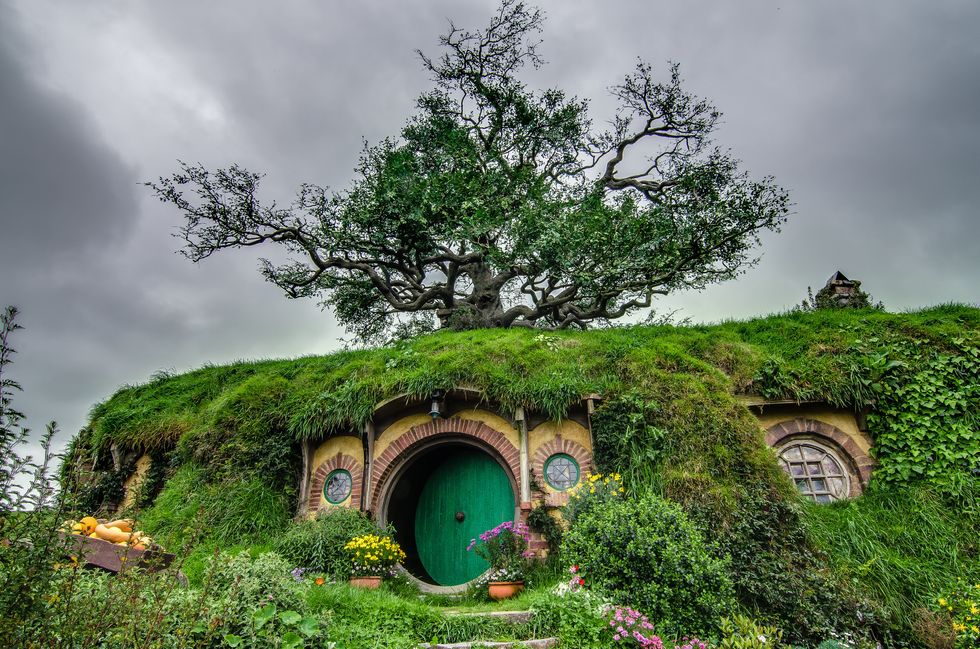Modern movies are a major part of my life, what from Marvel's Cinematic Universe to, admittedly, when yet another Pixar sequel comes to theaters some twelve years after the release of their original installment.
All this time, all the college debt I'm sure to be in, and I'm more than willing to part with some hard-earned greenbacks at another chance to watch the Avengers gang take on Thanos in Infinity War or Mrs. Incredible head into the superhero-work field for the upcoming Incredibles 2.
Still, my appreciation for filmography and the medium itself dates way back when, after the Disney cartoons I grew up with in early childhood, when I first came across the classic that is Peter Jackson's The Lord of the Rings trilogy.
For those not in the know(but how could you not be?!?!), the series focused on a group of hobbits(softer-featured, almost child-like dwarf alternatives), dwarves, elves, men, and wizards all headlong in a cross-country adventure to return the fabled, magical One Ring of a Dark Lord(just go with it, honestly) to its volcanic place of inception.
Despite its fantastical setting, larger-than-life characters, and archaic story structure, there is enough for every kind of viewer: humor provided by the hobbits, action from the men and dwarves, and magic just radiating from the sorcerer that is portrayed by Sir Ian McKellen.
Yes, Gandalf the White is not only among one of my favorite LOTR characters, but is definitely in my top five characters of all time, and is where I must shift the narrative.
See, Sir Ian McKellen is just a little bit famous in terms of theatricality. He's the recipient of six Laurence Olivier Awards, a Golden Globe, Tony, and Screen Actors Guild Awards as well as two Saturn Awards and two Oscar nominations.
In addition, the man got his start and remains an authority of Shakespearean modern theater and science fiction pieces. You may know of him as Magneto, the archvillain in the X-Men film franchise.
Oh, and just as the cherry on top, he was knighted by the Queen, making him Sir Ian McKellen to his commoners. So, in short, to have this man break down on set while filming The Hobbit sequel trilogy, it's kind of a big deal.
The emotional response came as a result of McKellen forced to act out a majority of his lines not towards his fellow actors, but to green screen blobs in their place, and pretend to hear/react to lines as if they were right next to him.
The immense pressure of having to give genuine interactions while having little-to-no human interaction at all was weighing on McKellen, who broke down and declared that, "[this].....is not why I got into acting."
This main complaint: the heavy overuse of CGI which was, ironically, a major complaint for the sequel film trilogy overall.
The originals were famously filmed on-site in New Zealand, and so time was taken throughout the run-through to deliver sweeping air angles of New Zealand's mountainous, beautiful region and the fully-developed Hobbiton(town of which the Hobbits reside).
Everyone who's seen the movie can probably claim, at least once, to enviously wanting a little home in a hill not unlike the Baggins'.
It's iconic, among a few of the most memorable and easily-recognizable homes in fictional film history, and it was all made to be walked on, acted out within, and truly feel lived-in.
In comparison, The Hobbit took liberties with CGI, and so there were no more establishing shots of a wide area allowing for a view of these characters' lives and homes, all in exchange for a much quicker release date and supposed better imagery.
This too is also the issue often allotted to the failure that was the Star Wars prequels. Much was critiqued about Yoda's now completely CGI body in place instead of Jim Henson's memorable puppetry, and fans did not appreciate the shift in design.
Not only this, but gone are the emotional, slower, and more drawn-out duels of light sabers requiring skill and precision of the actors' and, by extension, bated breath by the audience, in exchange for CGI flips and twirls not humanly possible.
Understand, I'm not implying all CGI, or even the bare minimum use of said technology, is inherently wrong, but that our heavy reliance on it as sacrificed the craft that goes into filming.
When I walk into a movie theater, I'm excited to see the Incredible Hulk battle it out with intergalactic baddies, or have animated Cars just......Car-about in a Pixar film for two hours, but I also miss the genuine nature behind two actors playing off each other and the very real environment around them.
Maybe it's the actor in me, but I can't imagine acting out a believable character without my fellow castmates beside me, or even an environment to work in.
My take: Limit the CGI to a few parts of the film, a fantastical character whose design would definitely be a nightmare for costume designers, but don't let it overshadow the heart of what goes into a film.
The original Star Wars films had a low budget, were mostly filmed with model craft instead of CGI spaceships, and made a lot more viewers happy to witness their magic knowing it was all real.





 mr and mrs potato head
StableDiffusion
mr and mrs potato head
StableDiffusion










